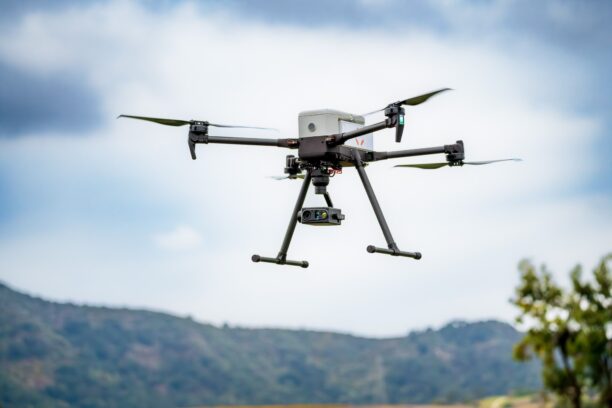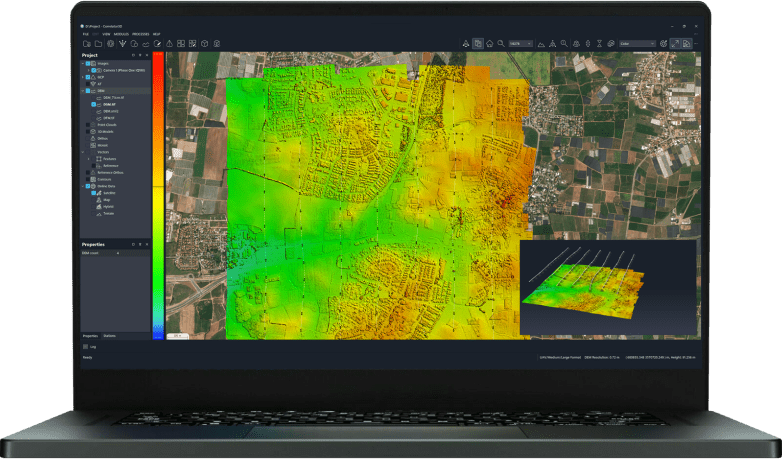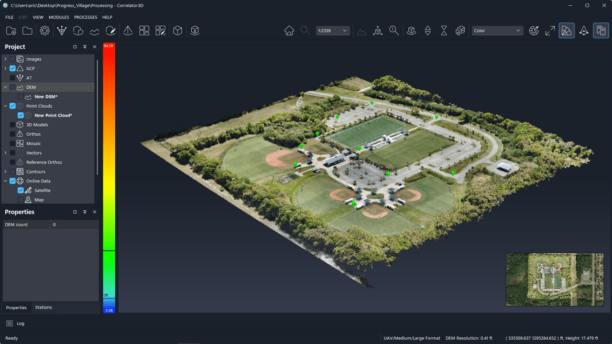Embracing Small, Smart, and Scalable Drones
China is rapidly redefining their approach to modern warfare by shifting its focus to small, low-cost, AI-powered drones. Recent state media reports highlight the deployment of micro drones across the People’s Liberation Army (PLA), including a new model weighing less than a kilogram. This drone features a coaxial dual-rotor system for superior lift, modular payloads, and AI-powered swarm coordination. Designed for both reconnaissance and attack, these drones can carry multiple grenades, operate silently, and transmit real-time intelligence. Their affordability and agility are central to China’s strategy, enabling mass deployment and rapid scaling on the battlefield. (Note – US manufacturer Ascent AeroSystems also makes a small coaxial drone, check out their newest release here.)
A “Phased Leap” in Unmanned Combat
This move is part of what Chinese military sources describe as a “phased leap” in unmanned combat technology. The PLA’s strategy involves first expanding drone use, then deeply integrating them into operations, and ultimately achieving full autonomy. China is not limiting itself to a single drone type; the military is experimenting with swarms, mothership drones that launch hundreds of mini-drones, and fiber-optic guided models that resist jamming. China’s manufacturing scale is unmatched, with companies like DJI and AVIC producing drones at rates comparable to consumer electronics. As a result, China’s drone fleet is now estimated to be ten times larger than those of the U.S. and Taiwan combined.
Changing the Rules of Engagement
The shift to small drones is changing the rules of engagement on the battlefield. Swarms of mini-drones can overwhelm defenses, conduct coordinated attacks, and gather intelligence in environments where traditional systems might struggle. The integration of AI allows a single operator to control multiple drones, multiplying their effectiveness. China’s dominance in commercial drone manufacturing, led by DJI’s global market share, directly supports its military capabilities, making advanced small drones widely available and affordable.
The U.S. Response: Innovation and Countermeasures
In response, the United States has launched major initiatives to close the gap. The Pentagon’s $1 billion Replicator Initiative aims to field thousands of air, sea, and land drones by August 2025, embracing a “hellscape” strategy of saturating contested areas with unmanned systems to counter China’s numerical advantage. The U.S. is also investing heavily in counter-drone technologies, establishing the Joint Counter-Small Unmanned Aircraft Systems Office (JCO) to coordinate layered defenses against the growing threat of small, agile drones. This includes integrating AI into command and control systems for faster targeting and deploying both nonlethal and lethal countermeasures.
A Global Trend: Small Drones at the Center of Strategy
The rapid adoption of small drones is not limited to the U.S. and China. Other countries, such as Taiwan, are also ramping up anti-drone defenses in response to repeated Chinese drone incursions. Around the world, militaries recognize that small, intelligent drones are now a central feature of modern operations, offering new tactics and capabilities at a fraction of the cost of traditional systems.
China’s accelerated development and mass production of small, AI-powered drones are narrowing the technological gap with the United States, as highlighted in recent Pentagon reports. These advancements are showcased at industry airshows and have been integrated into a range of military and non-military roles, from surveillance to anti-submarine warfare and even disaster response.
Small Drones, Big Impact
China’s shift to small, smart drones-supported by industrial scale, AI integration, and innovative designs like coaxial rotors-marks a pivotal transformation in military technology. The U.S. and its allies are responding with their own rapid development and countermeasures, setting the stage for a new era where small drones play an outsized role in both conflict and security.
Read more:
- Pentagon’s Replicator 2 to Focus on Countering Small Drones
- Nearthlab Joins Red Cat Futures Initiative to Advance U.S. Defense Drone Innovation

Miriam McNabb is the Editor-in-Chief of DRONELIFE and CEO of JobForDrones, a professional drone services marketplace, and a fascinated observer of the emerging drone industry and the regulatory environment for drones. Miriam has penned over 3,000 articles focused on the commercial drone space and is an international speaker and recognized figure in the industry. Miriam has a degree from the University of Chicago and over 20 years of experience in high tech sales and marketing for new technologies.
For drone industry consulting or writing, Email Miriam.
TWITTER:@spaldingbarker
Subscribe to DroneLife here.







It’s clear that the stakes are high in the continued impact that the “miniaturization curve” is having on drone utilization within battlefield/contested environments. There was a harsh, wake-up call and lessons learned about the impact and value drones have in combat – derived from the Ukrainian conflict – although the advancements and acceleration of these drone capabilities – have the feel of the technology fever seen in Silicon Valley (historically). You can put your Sci-Fi hat on – because there is no limit to what can be realized with drone utilization.